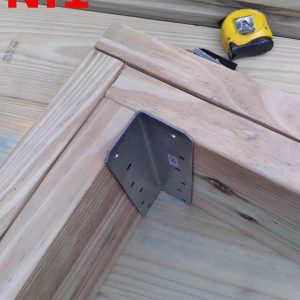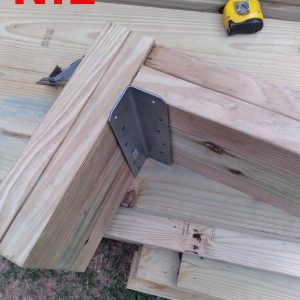Any reason to cut corners like this?
Hello guys, I don’t remember where I saw it, but is there any purpose to cut corners for corner rim bands like in the picture N.1? Comparing the N.1 and the N.2 I don’t see a big difference in structural advantages. What are your thoughts? Thanks.





















Replies
my 2 cents is that N1 the exterior 2x stock is carrying the load of the upper cross piece,
in N2, the only thing carrying the load is the steel angle bracket support and any fasteners going in the edge of the framing
I'd go with N1
Thank you firedudec56.
Yep definitely number one
I would go so far as to miter the outside joists so no end grain is showing. Looks nicer and preserves wood.
Thank you bing0328.
well to me the first image shows the better grip than the second 1
Thank you RBOSIAL.
OCD
it is generally not advisable to cut corners. Structural elements are designed to provide stability, support, and integrity to a building or structure.
Cutting corners on structural elements can compromise their effectiveness and potentially weaken the overall structure. It's important to follow industry standards, building codes, and structural engineering principles when constructing or modifying any structural components.
Did you by any chance read this thread?
Pardon me if I didn’t understand your post.
Having already posted my own facetious comment, I wonder if this comment could be tongue-in-cheek.
LCEFencing, thank you for the comment, but I didn't understand. I didn't "cut" the corners.
I'm building these.
Cutting corners can sometimes occur for various reasons, but it's important to note that it is generally not recommended or considered a best practice. Here are a few potential reasons why someone might be tempted to cut corners:
Time constraints: When there are tight deadlines or limited time available, individuals or organizations may feel pressured to take shortcuts to meet their targets. However, rushing through a process can lead to errors, compromised quality, and long-term negative consequences.
Cost reduction: In some cases, cutting corners may be seen as a way to save money or reduce expenses. However, this approach can backfire if it results in poor quality products or services, leading to customer dissatisfaction, legal issues, or expensive rework down the line.
Lack of resources: Insufficient resources, such as budget, personnel, or equipment, can lead to shortcuts being taken. Without the necessary tools or manpower, individuals may be tempted to take quick and easy routes, even if they are not the best solutions.
Lack of knowledge or skills: If someone lacks the necessary expertise or knowledge in a particular area, they may resort to cutting corners as a way to compensate for their deficiencies. However, this can result in subpar celebrity hair transplant gone wrong outcomes or missed opportunities for learning and growth.
Pressure to meet targets: In highly competitive environments or when performance metrics are heavily emphasized, individuals may feel pressured to achieve results at any cost. This can lead to cutting corners as a means to achieve immediate goals, often disregarding potential long-term consequences.
It's important to recognize that cutting corners can have negative repercussions, such as compromised quality, damaged reputation, increased risk, or legal issues. It is generally advisable to prioritize thoroughness, quality, and adherence to established standards and procedures to ensure better outcomes and long-term success.
You cant make this stuff up.
ask a simple question and you get a lecture on an entirely different subject
I go with No.1
When constructing a sturdy and reliable structure, it is crucial to ensure that the load is properly distributed. In this case, the steel angle bracket and fasteners play a critical role in supporting the weight and maintaining the integrity of the framework.
“[Deleted]”
Did you even read the original post?
Yours is a good example of a pc of crap reply. Evidently you forgot to include a spam link.
Nice try changing your screen name.
I think folks are playing with AI apps.
Ensuring the load is evenly distributed is vital when building a robust and dependable structure. The steel angle brackets and fasteners, in particular, play a pivotal role in providing essential support and preserving the framework's integrity.